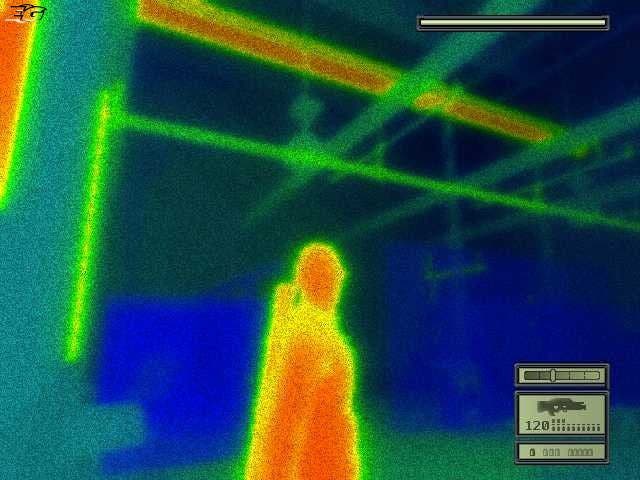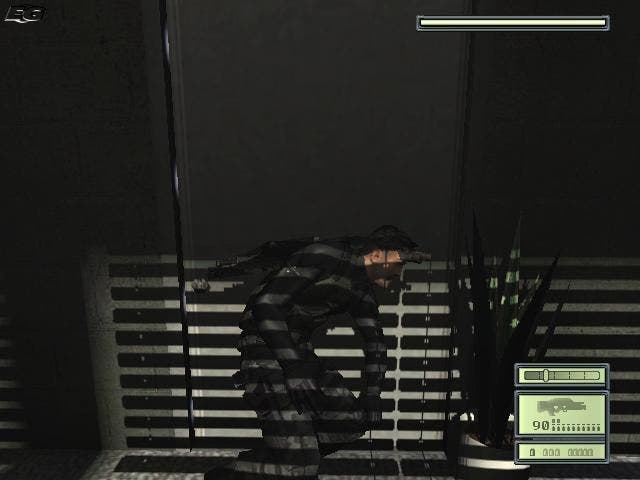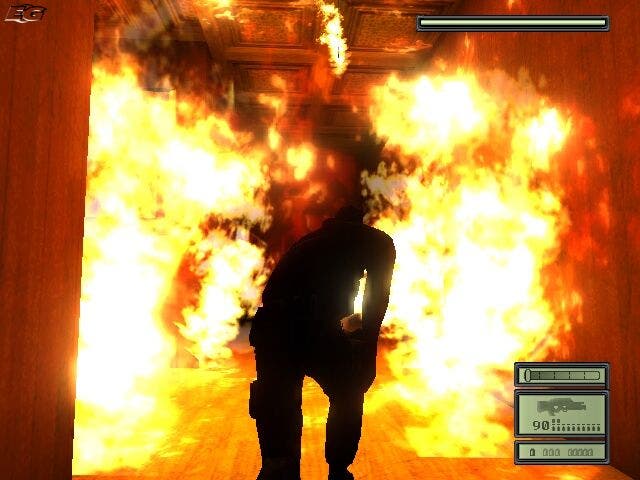Mathieu Ferland of Ubi Soft Montreal
Interview - we talk to Splinter Cell's producer about the latest Tom Clancy inspired action game
The world isn't exactly short of Tom Clancy branded games, with several titles already on shelves and a whole new series on the way to consoles and PC alike. One of the most exciting, and certainly the best looking, of this fresh crop of militaristic games is Splinter Cell. We caught up with producer Mathieu Ferland at Ubi Soft Montreal to find out what's cooking up there in Canada.

Metal Gear Clancy?
"Tom Clancy's universe is very credible because all of the stories occur in a very close future starting with the premise of our actual living world", according to Mathieu. "Typically, Clancy's environment is made up of a strong geo-political and military conflict, with high tech gadgets and communication devices inspired by existing material in development in the US army, with a big terrorist threat and a hero that gets involved and needs to save the day. These ingredients were perfect to create previous Clancy games, and were a great inspiration to build Splinter Cell."
In the case of Splinter Cell, this extrapolated future conflict is based around information warfare rather than physical combat, leaving America reliant on shadowy organisations like the NSA's Third Echelon team to fight off the threat. It's not just the setting that's unusual though, as Splinter Cell marks something of a break from tradition for the Tom Clancy franchise. Rather than working as part of a Rainbow Six style tactical combat team, you control a lone NSA operative called Sam Fisher, and the focus is more on stealth than action.
"Intensity, realism and stressed action are still part of the game, but the implementation in Splinter Cell is different than previous titles. We wanted to create a new kind of crisis that justifies the creation of a new special force: a solo agent supported by a small group of strategists. Our goal was to make a new genre with gameplay closer to the Thief and Metal Gear Solid series."

Non-Lethal
This fundamental change in gameplay is mirrored by the range of high tech gadgetry that becomes available to you during the course of the game. The focus now is more on finding, watching and avoiding enemies rather than killing them outright.
"Gadgets need to fit in with the Clancy universe, so they either already exist in the real world, or they are fairly credible to become real in the near future. Sam can use non-lethal weapons, thrown with his launcher on a modified version of the F2000, like sticky shockers, ring airfoil or gas grenades, but he also has the ability to shoot small cameras that stick to walls and provide vital information. [There's] a camera jammer to disable surveillance cameras and a snake cam to look under doors, and night vision and thermal vision goggles are also available."
The design also called for a change of perspective, replacing the usual first person view of games like Rogue Spear and Ghost Recon with a third person camera. "Splinter Cell is more an action-adventure game than a shooter. Because the character needs to interact more often with the environment, it was more obvious to develop the game in a third person view. However, the player has full control of the camera, which makes the freedom of gameplay quite close to what a first person view can offer. With this system we're getting most of the benefits that a first person view can offer, and keeping a gameplay mechanic and interactions made for a third person view."

Lurking In The Shadows
The world through which Sam Fisher moves is beautifully detailed, in stark contrast to the rather angular environments of previous Tom Clancy games. Appropriately enough the lighting and shadow effects in particular are eye-catching.
"We wanted to radically change the way lighting and shadows are usually computed in videogames", Mathieu explained. "The classical way of doing lights in videogames relies on placing them in the levels, simulating reflections on textures and then adding shadows to simulate realistic environments. We wanted this new system to be automatic and dynamic in all the levels. Now we can have full interaction with the environment, and provide very nice gameplay with the shadows of enemies and with your own shadow. We've also created filters on the final image which contributes a lot on the artistic style of Splinter Cell."
Obviously the pixel and vertex shader support and other hardware features of the Xbox have made this job simpler, but the game is also expected to appear on the PlayStation 2 and GameCube at some point. "We wanted the game to be as close as possible to what we had in our mind. There were different ways of doing it, but specifications featured by the Xbox best fit our expectations. Other consoles like the PS2 and GameCube should provide a gameplay quite similar. However, the lighting system will be adapted to each plateform in order to get the best result out of each of them."

Unreal
All of this eye candy is being provided courtesy of a modified version of the Unreal engine. "The Unreal Engine provided a very strong basis to start the project", Mathieu told us. "Early in the development, we could already build prototypes of our gameplay and nice rough levels."
"We wanted to spend most of our effort on improving something already good and bring it to the next level, instead of just using an external engine. As many other developers are using Unreal technology, the decision of putting our efforts at the right place made those amazing results. For example, we added a soft bodies physics engine to allow us to reproduce the movement of many objects (sheets, curtains, etc) in the game while the light passes through it."
But although the game is a real visual treat, it's the gameplay that Mathieu believes will make Splinter Cell really stand out. "I think that players' first interest will come from the outstanding graphics and from the cool gadgets Sam can use. Then, once he tries the game, he'll discover all the actions and moves Sam can do and all the interactivity he can have with the environment. He'll also discover a great freedom of gameplay as he'll need to decide the level of risk he wants to take in each of his actions. Finally, he'll figure out that there are different ways of reaching the same goal, which will make him want to play again."
Conclusion
This replay value should be the key to Splinter Cell's success, especially as it has no multiplayer support to fall back on; the game was conceived around the idea of playing as a solo operative, and according to Mathieu "a lot of the tension comes from this concept". As a strictly single player game though, Splinter Cells seems to be shaping up nicely from what we've seen so far, with gorgeous graphics, stealth-based gameplay and a storyline developed in association with Tom Clancy himself.
Before the game is released it apparently has to go through a final validation process in which Tom Clancy "will double check every phase of the game", but assuming there are no unexpected setbacks, the Xbox version of Splinter Cell should be appearing in Europe some time in November, with PC, GameCube and PlayStation 2 versions following some time later.







